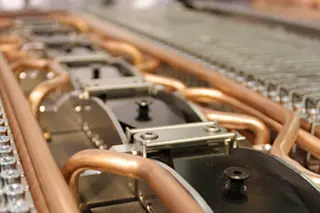Last October China’s Tianhe-1A took the title of the world’s most powerful supercomputer, capable of 2.5 petaflops, meaning it can perform 2.5 quadrillion operations per second. It may not hold the top spot for long, as IBM says that its 20- petaflop giant Sequoia will come online next year.
Looking ahead, engineers have set their sights even higher, on computers a thousand times as fast as Tianhe-1A that could model the global climate with unprecedented accuracy, simulate molecular interactions, and track terrorist activity. Such machines would operate in the realm called the exascale, performing a quintillion (that’s a 1 with 18 zeroes after it) calculations per second.
The biggest hurdle to super-supercomputing is energy. Today’s supercomputers consume more than 5 megawatts of power. Exascale computers built on the same principles would devour 100 to 500 megawatts—about the same as a small city. At current prices, the electric bill alone for ...















